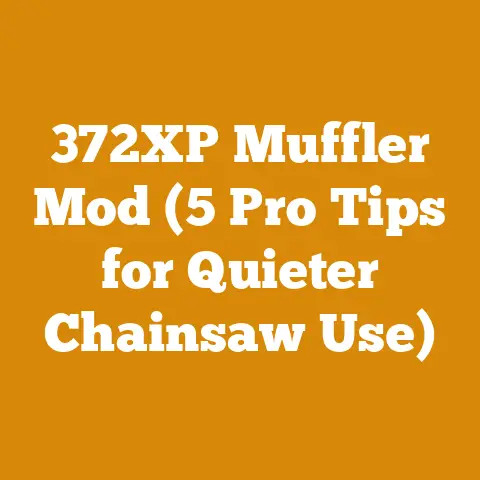Brisket Flat Smoke Time Per Pound (5 Pro Tips for Perfect Bark)
I’ve spent countless hours tending smokers, experimenting with different wood types, and meticulously monitoring internal temperatures to achieve barbecue perfection. I still remember my first brisket – a tough, chewy disaster that taught me a painful lesson about patience and precision. Over the years, I’ve honed my skills, learned from my mistakes, and developed a deep appreciation for the art of low and slow cooking. Today, I want to share my knowledge and experience to help you master the brisket flat, focusing on the crucial element of smoke time per pound and how to achieve that coveted perfect bark.
Brisket Flat Smoke Time Per Pound: 5 Pro Tips for Perfect Bark
The brisket flat, a leaner cut than the point, can be a challenge to smoke properly. Its lack of intramuscular fat makes it prone to drying out if not cooked with care. However, with the right techniques and a keen understanding of smoke time per pound, you can consistently produce a juicy, flavorful brisket flat with a beautiful, mahogany-colored bark.
1. Understanding the Fundamentals: Time, Temperature, and Tenderness
Before diving into specific smoke times, it’s crucial to grasp the core principles of low and slow cooking. We’re aiming to break down the tough connective tissues in the brisket, primarily collagen, into gelatin. This process requires sustained heat over an extended period.
- Temperature: I recommend maintaining a smoker temperature of 225-250°F (107-121°C). This range allows for even cooking and sufficient smoke penetration. I personally prefer 225°F (107°C) for a longer, more gentle cook.
- Time: The general rule of thumb is 1.5 to 2 hours per pound at 225-250°F (107-121°C). However, this is just a guideline. The actual cook time can vary depending on several factors, including the thickness of the flat, the accuracy of your smoker’s temperature, and even the weather.
- Tenderness: The ultimate indicator of doneness is tenderness. A properly cooked brisket flat should probe like butter. This means a thermometer inserted into the thickest part of the flat should slide in with minimal resistance. I aim for an internal temperature of 203°F (95°C), but tenderness is the key.
Takeaway: Don’t rely solely on time. Temperature and tenderness are your true guides to brisket perfection.
2. Selecting the Right Brisket Flat: Marbling and Thickness Matter
The quality of your brisket flat significantly impacts the final result. Choosing the right cut is half the battle.
- Marbling: Look for a brisket flat with good marbling, even though it’s a leaner cut. Marbling refers to the flecks of fat within the muscle. This fat renders during cooking, adding moisture and flavor.
- Thickness: A thicker flat is generally better than a thin one. Thicker flats are less prone to drying out because they have more mass to retain moisture. I aim for a flat that’s at least 1.5 inches thick.
- Trim: You may need to trim excess fat from the flat. Leave a thin layer of fat (about 1/4 inch) on the top to help baste the meat as it cooks.
- Grading: USDA Prime or Choice briskets are generally preferred for smoking. They tend to have more marbling and better flavor than Select grades.
Example: I once purchased two flats of the same weight, but one was noticeably thinner and had less marbling. The thinner flat dried out significantly during the cook, while the thicker, well-marbled flat remained juicy and flavorful.
Takeaway: Prioritize marbling and thickness when selecting your brisket flat.
3. Mastering the Bark: Smoke, Rub, and Spritzing Techniques
Achieving a perfect bark is a crucial element of great barbecue. The bark is the dark, flavorful crust that forms on the outside of the meat during smoking.
- Smoke Wood Selection: The type of wood you use significantly impacts the flavor and color of the bark.
- Oak: A classic choice for brisket, providing a strong, smoky flavor.
- Hickory: Adds a slightly sweeter, bacon-like flavor.
- Pecan: A milder option that complements the brisket without overpowering it.
- Mesquite: Use sparingly, as it can be quite strong and bitter if overused. I personally avoid mesquite for brisket.
- Rub Application: A well-balanced rub is essential for developing a flavorful bark.
- Base: Start with a generous layer of coarse kosher salt and freshly ground black pepper. This is often referred to as the “Dalmatian rub.”
- Enhancements: Add other spices to your liking, such as garlic powder, onion powder, paprika, chili powder, and brown sugar. I prefer a simple rub to let the beef flavor shine.
- Application: Apply the rub liberally to all sides of the brisket at least an hour before smoking, or even overnight in the refrigerator.
- Spritzing: Spritzing the brisket during the cook helps keep it moist and promotes bark formation.
- Liquid: Use a mixture of apple cider vinegar, beef broth, or even water. I prefer apple cider vinegar for its slight acidity.
- Frequency: Spritz the brisket every hour or two, starting after the first 2-3 hours of smoking.
- The Stall: Be prepared for the “stall,” a period where the internal temperature of the brisket plateaus. This is due to evaporative cooling. Don’t increase the smoker temperature. Be patient and continue cooking. Spritzing can help push through the stall.
Case Study: I conducted an experiment comparing briskets smoked with different wood types. The oak-smoked brisket had the deepest, most robust bark, while the pecan-smoked brisket had a slightly sweeter, more subtle bark.
Takeaway: Experiment with different wood types and rub combinations to find your perfect bark profile. Spritzing is your friend!
4. Wrapping vs. No-Wrap: Managing Moisture and Bark Development
The decision to wrap or not to wrap the brisket is a matter of personal preference and desired outcome.
- Wrapping (Texas Crutch):
- Purpose: Wrapping helps to retain moisture and speed up the cooking process. It also helps to soften the bark.
- Materials: Use butcher paper or aluminum foil. Butcher paper allows for some breathability, which can help prevent the bark from becoming too soft.
- When to Wrap: Wrap the brisket when it reaches an internal temperature of around 160-170°F (71-77°C), or when the bark has reached the desired color and firmness.
- Liquid: Add a small amount of liquid (beef broth, tallow, or melted butter) to the wrap for extra moisture.
- No-Wrap:
- Purpose: No-wrap results in a thicker, firmer bark. It also allows for more smoke penetration.
- Challenges: No-wrap requires careful monitoring to prevent the brisket from drying out.
- Techniques: Increase spritzing frequency and maintain a consistent smoker temperature.
My Preference: I generally prefer to wrap my brisket flats in butcher paper. I find that it strikes a good balance between moisture retention and bark development. I usually wrap around 165°F (74°C) with a little bit of beef tallow.
Takeaway: Experiment with both wrapping and no-wrap techniques to determine which method works best for you and your equipment.
5. Resting is Key: Allowing the Brisket to Rest and Redistribute Juices
Resting the brisket after cooking is just as important as the smoking process itself. Resting allows the muscle fibers to relax and reabsorb the juices, resulting in a more tender and flavorful product.
- Resting Time: Ideally, rest the brisket for at least 2 hours, or even longer. I prefer a 4-hour rest.
- Resting Method:
- Wrapped: If you wrapped the brisket, leave it wrapped and place it in a cooler or Cambro with towels to insulate it.
- Unwrapped: If you didn’t wrap the brisket, wrap it in butcher paper or foil and then place it in a cooler or Cambro.
- Temperature Monitoring: Monitor the internal temperature of the brisket during the rest. You want it to stay above 140°F (60°C) to prevent bacterial growth.
Personal Story: I once rushed a brisket and only rested it for 30 minutes. The result was a dry, crumbly mess. I learned my lesson the hard way. Now, I always prioritize a long rest.
Takeaway: Patience is paramount. A long rest is essential for a juicy, tender brisket.
Additional Tips for Smoking Brisket Flats
Beyond the five pro tips, here are some additional considerations to ensure brisket success:
- Water Pan: Use a water pan in your smoker to help maintain humidity and prevent the brisket from drying out.
- Thermometer Placement: Place your thermometer in the thickest part of the flat, avoiding any pockets of fat.
- Consistent Temperature: Strive to maintain a consistent smoker temperature throughout the cook. Fluctuations can negatively impact the final product.
- Clean Smoke: Ensure that your smoker is producing clean, blue smoke. White, billowy smoke can impart a bitter flavor to the brisket.
- Practice: The more you smoke briskets, the better you’ll become at it. Don’t be afraid to experiment and learn from your mistakes.
Troubleshooting Common Brisket Flat Problems
Even with the best techniques, problems can arise. Here’s how to troubleshoot some common issues:
- Dry Brisket:
- Cause: Overcooking, insufficient fat, low humidity.
- Solution: Wrap earlier, increase spritzing frequency, use a water pan, choose a brisket with more marbling.
- Tough Brisket:
- Cause: Undercooking, insufficient resting time.
- Solution: Cook to a higher internal temperature, ensure tenderness, rest for at least 2 hours.
- Rubbery Bark:
- Cause: Wrapping too early, excessive moisture.
- Solution: Wrap later, reduce spritzing frequency, use butcher paper instead of foil.
- Bitter Taste:
- Cause: Dirty smoke, overuse of mesquite.
- Solution: Ensure clean smoke, use milder wood types.
Equipment Checklist for Smoking Brisket
Having the right equipment makes the smoking process much easier and more efficient. Here’s a basic checklist:
- Smoker: Choose a smoker that can maintain a consistent temperature.
- Thermometer: A reliable thermometer is essential for monitoring the internal temperature of the brisket.
- Butcher Paper or Aluminum Foil: For wrapping.
- Spray Bottle: For spritzing.
- Water Pan: To maintain humidity.
- Sharp Knife: For trimming.
- Cutting Board: For prepping the brisket.
- Gloves: To protect your hands.
- Tongs: For handling the brisket.
- Cooler or Cambro: For resting.
Brisket Flat Smoke Time Per Pound: A Detailed Breakdown
Let’s revisit the core topic: smoke time per pound. While the 1.5-2 hours per pound guideline is a good starting point, here’s a more detailed breakdown based on different factors:
- Brisket Weight:
- 3-4 lb Flat: 4.5 – 8 hours total cook time
- 4-5 lb Flat: 6 – 10 hours total cook time
- 5-6 lb Flat: 7.5 – 12 hours total cook time
- Smoker Temperature:
- 225°F (107°C): Expect a longer cook time, closer to 2 hours per pound.
- 250°F (121°C): Expect a shorter cook time, closer to 1.5 hours per pound.
- Wrapping: Wrapping will significantly reduce the overall cook time.
- External Factors: Wind, ambient temperature, and even the altitude at which you’re cooking can affect the cook time.
Remember: These are estimates. Always rely on temperature and tenderness to determine doneness.
Advanced Techniques: Injecting Brisket Flats
For those looking to take their brisket game to the next level, consider injecting the flat with a flavorful marinade.
- Purpose: Injecting adds moisture and flavor deep into the meat, especially beneficial for leaner flats.
- Marinade Options:
- Beef Broth: A simple and effective option.
- Worcestershire Sauce: Adds a savory depth.
- Melted Butter: Adds richness and moisture.
- Garlic and Herb Infusion: Adds aromatic complexity.
- Injection Technique: Use a meat injector to inject the marinade into the brisket in a grid pattern, spacing the injections about 1-2 inches apart.
- When to Inject: Inject the brisket 12-24 hours before smoking to allow the flavors to penetrate.
Caution: Be careful not to over-inject, as this can make the brisket mushy.
Understanding Wood Properties for Optimal Smoke
The type of wood used significantly impacts the flavor profile of the smoked brisket. Each wood species imparts unique characteristics, influencing the aroma, taste, and color of the meat. Understanding these properties is crucial for achieving the desired outcome.
- Oak: A classic choice for brisket due to its moderate smoke intensity and balanced flavor profile. Oak provides a robust, smoky flavor without being overpowering, making it suitable for long smoking sessions. Different oak varieties, such as white oak and red oak, offer subtle variations in flavor, with white oak being slightly milder.
- Flavor Profile: Strong, smoky, balanced, versatile.
- Best Use: All-purpose smoking, especially for beef.
- Hickory: Known for its strong, bacon-like flavor, hickory adds a distinctive smoky richness to brisket. It complements the beef’s natural flavors, enhancing its savory notes. Hickory burns hotter than oak, so it’s essential to monitor the smoker temperature carefully to prevent overcooking.
- Flavor Profile: Strong, bacon-like, savory, intense.
- Best Use: Beef, pork, ribs.
- Pecan: A milder alternative to hickory, pecan offers a subtle, nutty sweetness that enhances the brisket’s flavor without overpowering it. Pecan is an excellent choice for those who prefer a less intense smoke flavor. It produces a clean smoke, ensuring a balanced and delicate taste.
- Flavor Profile: Mild, nutty, sweet, delicate.
- Best Use: Poultry, pork, fish, brisket (for a milder flavor).
- Mesquite: Renowned for its intense, earthy flavor, mesquite is best used sparingly for brisket. Overusing mesquite can result in a bitter or acrid taste. It’s ideal for adding a bold, smoky flavor but requires careful monitoring to prevent overpowering the meat’s natural taste.
- Flavor Profile: Intense, earthy, bold, potentially bitter if overused.
- Best Use: Short smoking sessions, grilling, caution advised for brisket.
- Fruit Woods (Apple, Cherry): While less traditional for brisket, fruit woods like apple and cherry can add a subtle sweetness and fruity aroma to the meat. They are best used in combination with stronger woods like oak or hickory to create a balanced flavor profile. Fruit woods burn relatively clean, producing a mild smoke that complements the brisket’s taste.
- Flavor Profile: Sweet, fruity, mild, aromatic.
- Best Use: Poultry, pork, fish, can be combined with stronger woods for brisket.
Selecting the Right Wood:
- Wood Source: Ensure the wood is properly seasoned (dried) to a moisture content of 15-20%. Green or unseasoned wood produces excessive smoke and can impart a bitter taste.
- Wood Size: Use wood chunks or splits that are appropriately sized for your smoker. Larger chunks provide a longer, more consistent smoke.
- Wood Combination: Experiment with combining different wood types to create a unique flavor profile. For example, a blend of oak and pecan can provide a balanced combination of smokiness and sweetness.
Personal Experiment: I once conducted a blind taste test using brisket smoked with different wood types. Participants consistently preferred the oak and hickory blends for their balanced and robust flavors.
Takeaway: Understanding the properties of different wood types is essential for achieving the desired flavor profile in your smoked brisket. Experiment with different combinations to find your perfect blend.
Safety Considerations for Brisket Smoking
Smoking brisket involves working with heat, smoke, and potentially sharp tools. Adhering to safety protocols is crucial to prevent accidents and ensure a safe cooking environment.
- Smoker Placement: Position the smoker in a well-ventilated area, away from flammable materials such as dry grass, wooden fences, or overhanging trees. Ensure the smoker is stable and on a level surface to prevent tipping.
- Heat Protection: Wear heat-resistant gloves when handling hot smoker components, such as grates, wood chunks, or charcoal. Use long-handled tools to add or remove items from the smoker, minimizing the risk of burns.
- Fire Safety: Keep a fire extinguisher or a water source nearby in case of flare-ups or accidental fires. Never leave the smoker unattended for extended periods, especially during the initial stages of smoking when flare-ups are more likely.
- Food Safety: Use a reliable meat thermometer to monitor the internal temperature of the brisket, ensuring it reaches a safe cooking temperature of at least 145°F (63°C) to kill harmful bacteria. Follow proper food handling practices to prevent cross-contamination.
- Carbon Monoxide Awareness: Be aware of the risks of carbon monoxide poisoning, especially when using charcoal or wood-burning smokers. Never operate a smoker indoors or in enclosed spaces. Ensure adequate ventilation to prevent the buildup of carbon monoxide.
- Tool Safety: Use sharp knives with caution when trimming the brisket. Keep knives clean and properly stored to prevent accidents. Wear cut-resistant gloves for added protection.
- Child and Pet Safety: Keep children and pets away from the smoker to prevent burns or other injuries. Establish a safety zone around the smoker and enforce clear boundaries.
Example: I once witnessed a minor fire when a grease buildup in the smoker ignited. Fortunately, a fire extinguisher was readily available, and the fire was quickly extinguished. This experience reinforced the importance of having proper safety measures in place.
Takeaway: Prioritizing safety is essential when smoking brisket. Following these guidelines will help prevent accidents and ensure a safe cooking environment.
Brisket Flat Smoke Time Per Pound: Final Thoughts and Conclusion
Smoking a brisket flat to perfection is a journey that requires patience, precision, and a willingness to experiment. By understanding the fundamentals of time, temperature, and tenderness, selecting the right cut of meat, mastering bark-building techniques, and resting the brisket properly, you can consistently produce a delicious and memorable barbecue experience.
Remember that smoke time per pound is a guideline, not a rule. The true measure of doneness is tenderness. Don’t be afraid to adjust your cooking time based on the specific characteristics of your brisket and your smoker.
Finally, embrace the learning process. Every brisket you smoke will teach you something new. Keep experimenting, keep refining your techniques, and most importantly, keep enjoying the process. Happy smoking!






